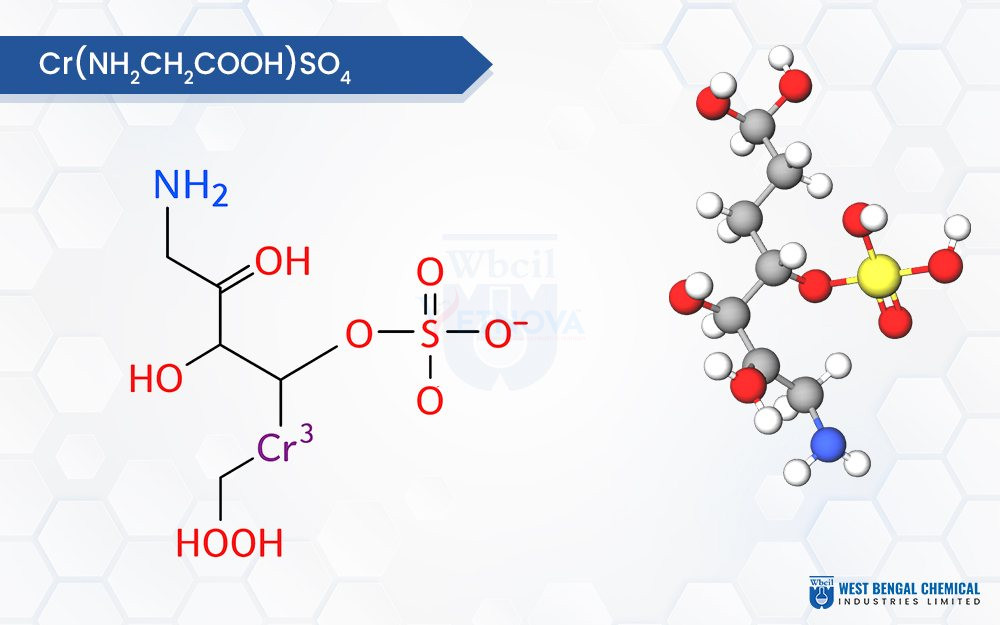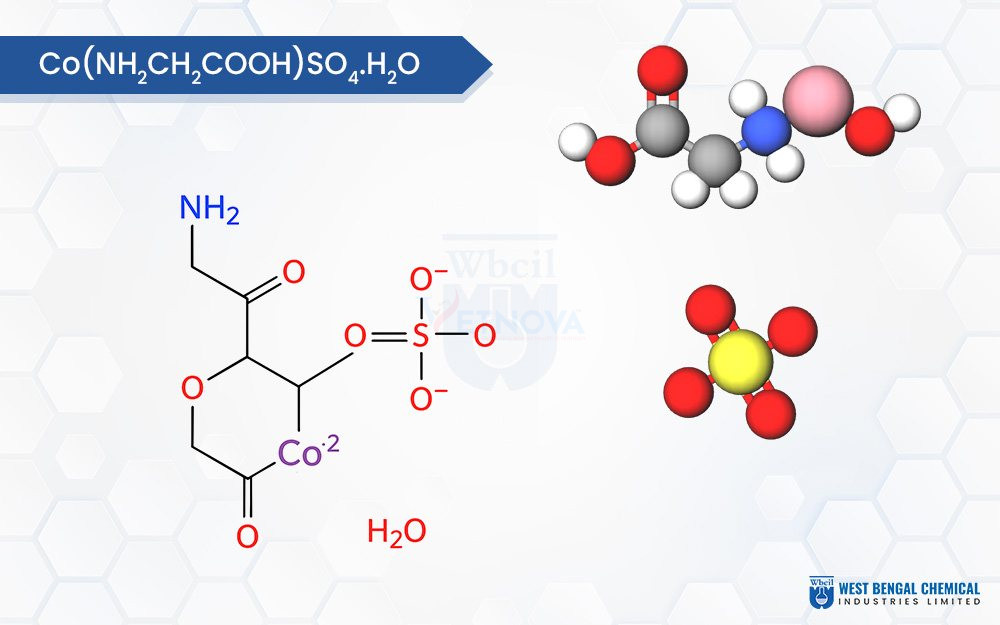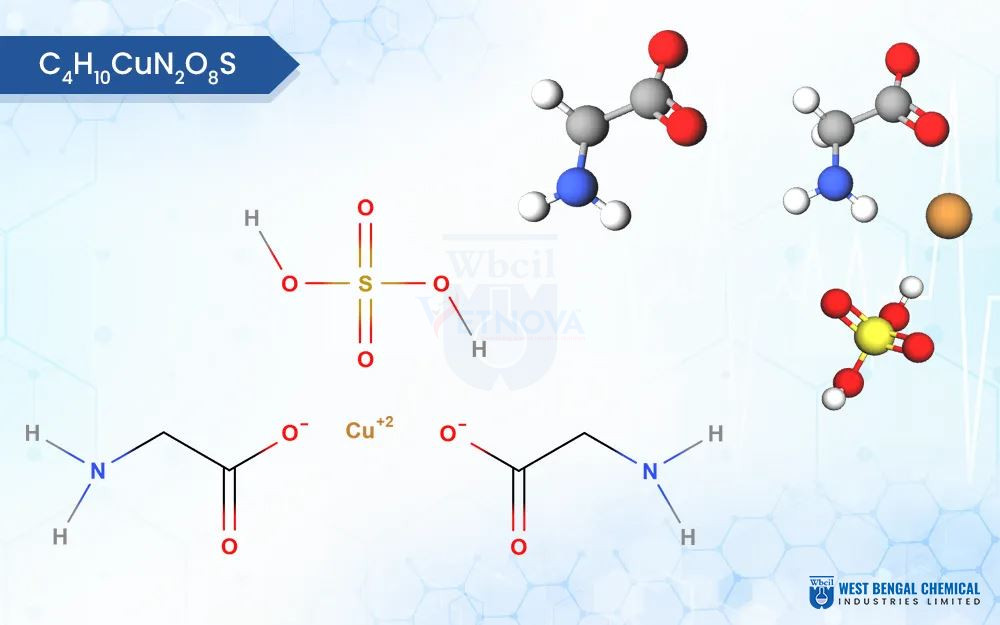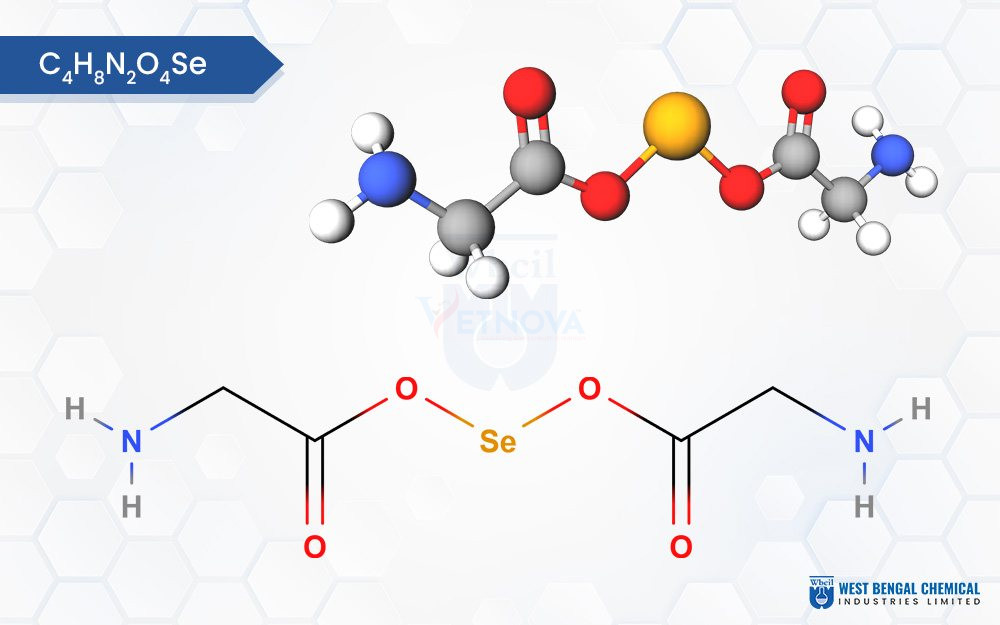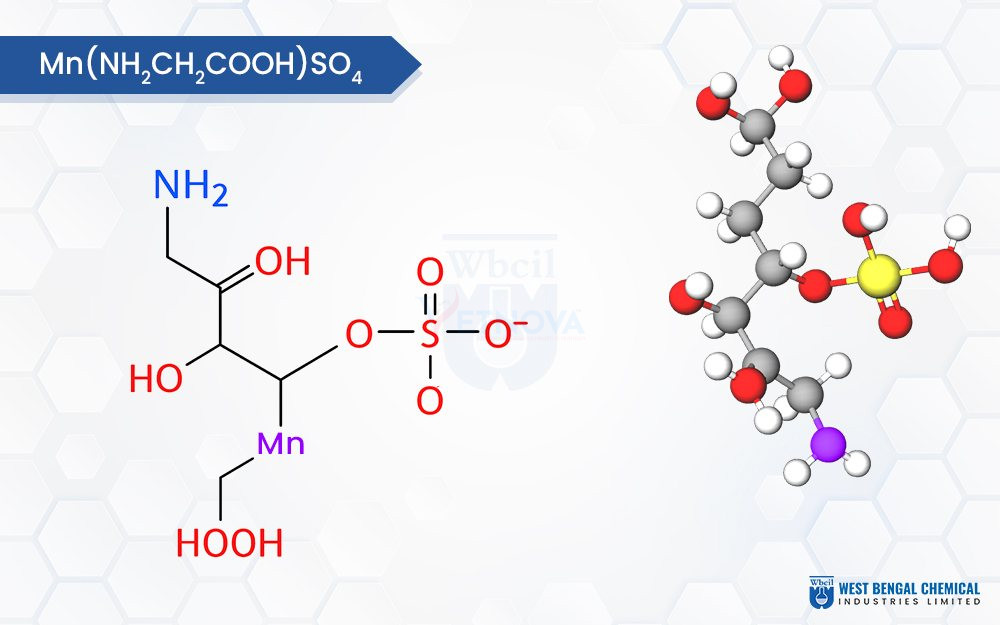
-
Product Name
Manganese Glycine Sulphate
-
Molecular Formula
Mn(NH2CH2COOH)SO4
-
Molecular Weight
226.07 g/mol
-
HSN Code
230120
-
Shelf Life
3 years - 20°C powder
- USP
- IUPAC Names
Our USP – Why Choose Vetnova’s Manganese Glycine Sulphate?
At Vetnova, we ensure maximum nutrient utilization for superior production outcomes. Our dedicated technical team provides ongoing support to ensure optimal results and customer satisfaction throughout the product lifecycle. Here’s what sets our product apart:
- WHO GMP & ISO Certified: Vetnova’s state-of-the-art facility operates under strict pharmaceutical manufacturing guidelines, ensuring consistent product quality and safety. Our production processes are FAMI-QS, GMP, and ISO-certified, ensuring compliance with international feed safety and quality standards.
- Superior Absorption: This provides superior absorption rates compared to inorganic manganese sulphate through its chelated amino acid carrier system. Advanced chelation technology is employed to maximize bioavailability and minimize antagonistic interactions with other minerals.
- Safe and Non-Toxic: Each batch undergoes rigorous analytical testing, including heavy metal screening and microbiological analysis
- Reliable Supplier: Comprehensive quality control systems are implemented throughout the manufacturing process, from raw material testing to final product validation. Particle size analysis and flowability testing guarantee consistent mixing characteristics in feed formulations.
- Long Shelf Life: With a storage life of 3 years from the manufacturing date, It maintains its stability and potency over time.
IUPAC Names of Manganese Glycine Sulphate
- manganese(II) sulfate glycinate
- manganese(II) bis(glycinato) sulfate
What is Manganese Glycine Sulphate?
It is a premium chelated mineral supplement specifically designed to address manganese deficiency in livestock, poultry, and aquaculture operations. It functions as a highly bioavailable source of manganese for optimal bone development and reproductive health in animals. This is achieved through amino acid chelation technology, which provides enhanced absorption compared to inorganic manganese sources.
Application Guidelines and Technical Support
Feed Compatibility and Processing Stability: As per Manganese Glycine Sulphate uses, it exhibits excellent stability under standard feed processing conditions, including pelleting temperatures and steam conditioning. It is compatible with most feed ingredients and additives without adverse interactions or nutrient degradation. It maintains chelation integrity throughout feed manufacturing and storage processes, ensuring consistent bioavailability.
Ongoing Technical Support Services: Comprehensive technical consultation is available for optimizing manganese glycine sulphate uses in feed production systems. Performance monitoring assistance, including blood mineral analysis interpretation and dietary adjustment recommendations, is provided. Formulation support for integrating chelated minerals into existing nutrition programs for maximum efficiency and cost-effectiveness is also available.
Benefits of Manganese Glycine Sulphate
- Enhanced Bioavailability and Absorption: It provides superior absorption rates compared to inorganic manganese sulphate through a chelated amino acid carrier system. This leads to reduced antagonistic interactions with other minerals in the digestive tract, resulting in improved mineral utilization.
- Metabolic and Physiological Benefits: It is a critical cofactor for numerous enzyme systems, including those involved in carbohydrate, protein, and lipid metabolism.
- Production Performance Improvements: Expect improved feed conversion ratios and daily weight gains in growing animals through enhanced metabolic efficiency. It leads to better reproductive performance, including improved conception rates and reduced embryonic mortality. It also enhances immune system function, resulting in reduced disease incidence and improved overall animal health.
- Key Manganese Glycine Sulphate role in body: It supports skeletal development and bone formation in growing animals through enhanced collagen synthesis. It improves reproductive performance in breeding stock by supporting enzyme systems critical for fertility. It contributes to eggshell quality and production rates in commercial layer operations. It enhances growth rates and feed efficiency in meat production systems. It also contributes to improving overall product quality and nutritional value of animal-derived feed products.
Yes, it is suitable for all livestock, poultry, and aquaculture species, providing essential trace minerals to support growth, immunity, and overall health.
Yes, Manganese Glycine Sulphate is safe for long-term use and maintains consistent bioavailability without causing toxicity.
It can be mixed directly into feed on-site or processed through a feed mill for uniform distribution.
Yes, it is fully compatible with other vitamins and minerals in premixes, ensuring optimal absorption and performance.
Visible improvements, such as better growth, feed conversion, and overall health, can typically be seen within 2–3 weeks.
Yes, Vetnova offers trial pack options to evaluate product performance before placing bulk orders.




